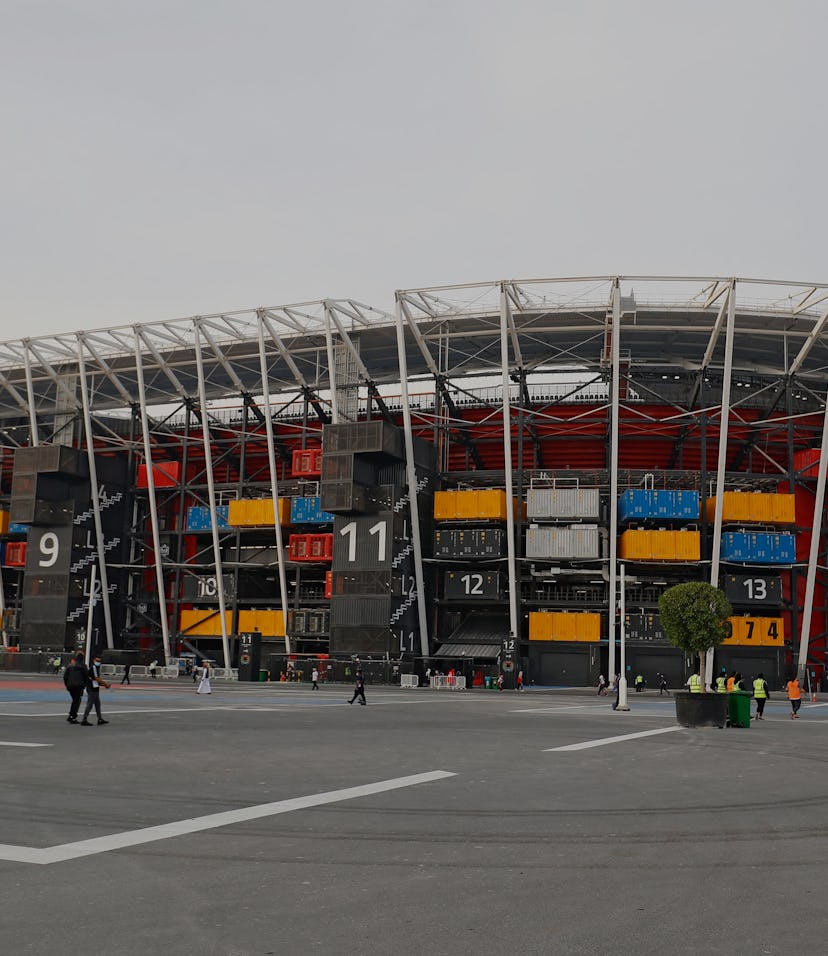Design
FIFA’s Qatar 2022 World Cup will have the first ‘transportable’ stadium
Stadium 974 is named after the number of shipping containers used to build it.

In 11 months time, the 2022 FIFA World Cup will register several firsts for the 22nd quadrennial competition. It’ll be the first World Cup held in the Arab World, the first time the tournament has been held outside of late spring or early summer, and the first time a World Cup game has been played in a “transportable” stadium.
Stadium 974 in the Qatari capital, Doha, was completed in late November and used for the Arab World Cup in preparation for the global competition later this year. Its name comes from both the international dialing code for Qatar and the number of recycled shipping containers used in construction. The modular design will allow the 40,000-person stadium to be disassembled following the conclusion of the World Cup and then transported and reassembled for further use. Qatar’s plan is to donate it to underdeveloped countries which may be in need.
“It is the ultimate legacy achievement,” Mark Fenwick, one of the partners of the architectural firm that designed the stadium, said in a video interview. “What would be fantastic, personally, is that it would be in the next World Cup, and that the stadium would be on another location across the ocean.”
Sustainability comes the very structure of a stadium — Modified shipping containers sit within the steel framework of the stadium and provides the spaces for the bathrooms, concessions, skyboxes, and media rooms. Natural ventilation created through the design of the stadium eliminates the need for air conditioning, while water-efficient methods used during construction saw a 40-percent reduction in water usage compared to conventional stadium development.
Stadium 974 is one of eight stadiums in Qatar that’ll be used for the World Cup and its ability to travel may prevent it from the sad fate of prior stadiums. Within just a year of the 2014 World Cup in Brazil, a $550 million stadium in the capital, Brasilia, was being used to store buses, according to a report from NPR. Another stadium in the more remote city of Manaus has largely become unused, and the Olympics has historically scattered its own share of abandoned venues around the world.
The 2026 World Cup — which will be hosted jointly by the U.S., Canada, and Mexico — hasn’t solidified its final list of venues yet, but each of the finalists is a stadium already in use by local sports teams. Subsequent World Cups, however, as well as the Olympics, could use Stadium 974 or the precedence its set to avoid such wasteful construction for an all-too-brief event.